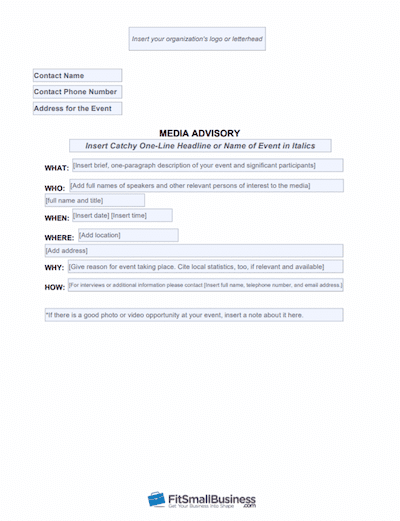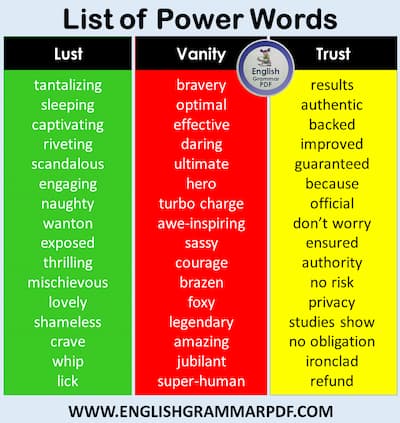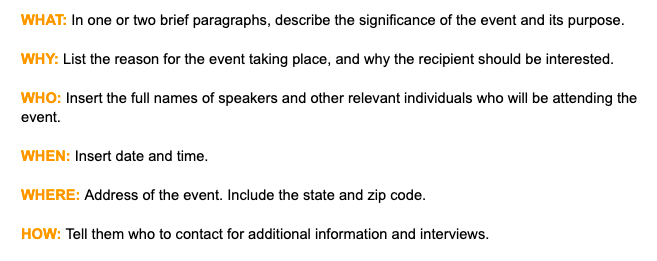6 Proven Steps to Writing a Buzz-Worthy Media Advisory

It can be frustrating when you put a lot of time and money into an event, and no one hears about it.
Does your company have an important upcoming event that needs a strategy when it comes to creating some buzz?
Two effective ways to get the word out to the masses are by releasing a press release and releasing a media advisory. Despite how similar they sound, there are significant differences between the two.
In this article, we will discuss the difference between a press release and a media advisory and give you 6 proven steps that will help you write a spectacular media advisory.
Let’s get started!
What’s a Press Release?
A press release is usually a long document that offers a specific news angle about an event or news item.
It provides narrative-style content blended with quotes from any key or important people involved in the event. It is designed to convey a message to the reader that may be understood even if the reader isn’t present at the media event.
Think of it like this: a press release is like the Sparks Notes version of a book. It goes over the beginning, middle, and end, with a few key plot points.
Writing a press release? Read our blog on effective press release strategies or get ideas for your next press release.
What’s a Media Advisory?
A media advisory is a notice provided to media outlets that announces an event or news item and provides information to solicit possible coverage. The advisory functions as an enticing and compelling invitation to your event.
When writing your media advisory, you want to keep it short and to the point, informing the recipient of the details of your event. A press release is often created to be shared as-is. A media advisory, on the other hand, is asking the press to create their own story based on their experience at your event.

In comparison to a press release being the Sparks Notes version of a book, a media advisory is like an interesting and eye-catching excerpt from a groundbreaking novel. Picture the back cover of a best-selling book. A media advisory might offer additional details to journalists regarding logistics, photo opportunities, etc.
So let’s dive in as to what steps you can take to create a buzz-worthy media advisory and bring attention to your event.
Preparing To Write a Media Advisory
Before you begin writing anything you first need to determine who your intended target audience is. This is an important step because without knowing who you are writing for and what interests them, you can’t get their attention.
The goal of your media advisory is to convince them that they should come to your event. The best way to do that is by providing them with an interesting story. Most reporters cover specific industries, so do your research on the type of articles they write so you aren’t wasting your time or theirs.
Now that you know who your audience is, it’s time to start writing your media advisory with them in mind.
6 Steps to Writing a Media Advisory
Step One: Create the Letterhead
Print the informative document on your company or organization’s letterhead. This identifies your company as the host of the event and shows professionalism. This builds credibility for your event, letting the press know that you are taking it seriously.
Step Two: Add Contact Information
At the top left corner of the page, type “Media Advisory” in all capital letters, and beneath it, type the date. Following that text, insert the contact information of whoever is hosting the event. This way, the press can get more information about the event.
Contact information should include:
- Name of the company
- Names of each contact
- Their titles (e.g. PR Coordinator, HR Director)
- Phone numbers
- Email addresses
Pro tip: include two people that are easily reachable so nobody gets frustrated waiting for a response.
Step Three: Write an Attention-Grabbing Headline
Write an eye-catching headline that will not only grab a reader’s attention but hold it as well. Thousands of news advisories and press releases are distributed every day. Your headline counts, so make it stand out with words that create a strong visual image, or use numbers.
The headline can be up to four lines long, including a sub-heading. Keep it short, concise, and use a large, bold font.

One great way to ensure you grab the reader’s attention is by using “power words” in your headline. Power words are persuasive words you can use in your writing that add more description and evoke emotion.
Step Four: Include Important Details
Cover all of the vital information about your event’s details in a short description. Following the advice given about creating a headline, also use words to make it visual. List any speakers that will be at your event, and insert a quote from someone in your company that works on the event.

This is where you put the main message you are trying to convey to the media and the public. Crucial information to include is Who, What, When, Where, and Why. That way every question your reader may have is instantly answered and they aren’t discouraged from attending.
If there are photo opportunities, be sure to mention them in the advisory. Photo editors of nearby news outlets and reporters will be drawn in by this information. In the last paragraph, provide a brief summary of your company/organization.
Step Five: Formatting
If your advisory is longer than one page, type “MORE” at the end of the 1st page. Then include both a contact phone number and headline in the upper-right hand corner of the following pages. At the end of your advisory, type “###” which is how journalists and reporters mark the end of your copy.
Step Six: Distribute Media Advisory
Now that your media advisory is complete, it is time to start distributing it to the press. We recommend sending it out about a week before your event to give enough time to generate buzz but not too much time that it becomes old news.
One way to distribute your media advisory is by sending it directly to any press contacts you have. One thing to note is that your copy should be put directly into the email instead of being attached to avoid going to spam.
The other way you can distribute your media advisory is by using a third-party distribution service, like Newswire. This is perfect for when you don’t already have press contacts or you want to be able to highly target your audience.
Download Our Media Advisory Template
Generate Buzz With Chatter Buzz
Do you need help creating and distributing your media advisory? We have PR experts ready to help you craft the perfect media advisory that will generate buzz and bring the press to your event.
Our Orlando Marketing Agency can answer any questions you have about marketing and offer public relations services. Give us a call at 321-236-BUZZ!
For more information on working with the media, read our blog on How to Create Your Own Media Kit.








